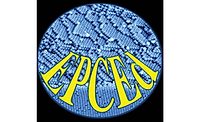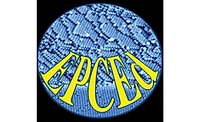By Henry Eichman, Research Technologist, Zhenwen Fu, Research Fellow, Art Leman, Technical Service Manager, Bingquan Li, Technical Service Scientist, and Leo Procopio, Application Development Leader, Dow Coating Materials, Collegeville, PA
Epoxy coating systems are the traditional go-to solution for institutional interiors because they offer a level of chemical resistance that stands up to the rigorous cleaning regimens and harsh cleaning agents commonly used in these high-traffic spaces. Unfortunately, exposure to UV rays can lead to chalking, yellowing and gloss reduction. This has always limited epoxy’s effectiveness in exterior coating systems. Now it is an emerging issue for interior coating systems due to the growing popularity of daylighting.
According to the Department of Energy (DOE), illuminating interior spaces with natural light can reduce total energy costs by up to one third.1 Other studies associate day-lit interiors with improving the health and productivity of building occupants, increasing retail sales and even raising student test scores.2 Over time, however, the flood of natural light that brightens a building’s mood also dulls and yellows the epoxy-based coatings that protect its floors, walls and ceilings.
To satisfy the need for coatings that offer durability and interior UV protection, Dow Coating Materials has developed a low-VOC-capable hybrid resin for two-component (2K) coating systems.3 MAINCOTE™ AEH-10 acrylic-epoxy hybrid combines the weatherability and UV resistance of acrylics with the chemical resistance of epoxies. The technology is <100 g/L VOC capable when used with acrylic hardeners and <50 g/L VOC capable when used with amine hardeners.
Concrete Benefits
As shown in Figure 1, waterborne epoxy systems for concrete coatings generally fall under one of three types. Type I systems are comprised of a neat liquid epoxy resin (LER) and a waterborne amine curing agent. They require surfactant to enhance emulsification of the LER, as well as solvent or diluent to reduce the viscosity. Type I systems can be formulated to provide high hardness and resistance properties, and are more cost effective for commercial applications; however, they also build hardness more slowly, which results in a longer return-to-service time.
Type II systems utilize pre-dispersed waterborne epoxy resins. These are easier to use since emulsification of the epoxy during the mixing step is not required. Typical performance properties include increased flexibility and faster hardness development through physical (lacquer) drying. However, these pre-dispersed epoxy systems often bring in significant levels of VOC solvents, as well as a higher cost profile compared to Type I systems. They also tend to have short pot lives of 1 to 3 hours.
Type III systems also utilize pre-dispersed epoxy resins (usually LER) for Part A, but employ an acrylic latex for Part B. These systems rely on an acid-epoxy reaction for curing and are catalyzed by tertiary amines. While Type I and Type II systems are commonly used for concrete floors, Type III systems are the dominant technology for concrete walls. They offer excellent chemical resistance, but have slow reaction times and take longer to develop full properties.
Figure 2 shows the development of MAINCOTE AEH resin technology, which introduces a fourth type of epoxy system that facilitates low-VOC formulation without sacrificing cure speed, pot life or property development. The enabling technology houses epoxy functionality inside acrylic latex particles. In the wet phase, the acrylic latex acts as a barrier between the hardener and the epoxy, which helps to extend pot life. As the formulated coating comes into contact with air, the water in the formulation evaporates, allowing the hybrid resin and hardener to make contact. Crosslinking occurs quickly and with reduced hardener demand because of a relatively high EEW value of the hybrid resin. The coalescent demand is low because the epoxy resin in the latex particle helps in lowering the minimum film formation temperature (MFFT) of the acrylic polymer. The hardener can be either an amine-based curing agent, or an acrylic polymer containing carboxylic-acid functionality, such as MAINCOTE AE-58 acrylic hardener.
Test Results
To demonstrate the performance benefits of the novel acrylic-epoxy hybrid technology, a 2K coating system formulated with MAINCOTE AEH-10 acrylic epoxy hybrid resin and MAINCOTE AE-58 acrylic hardener was tested against five commercial waterborne wall coating systems for concrete. The systems, listed in Table 1, were evaluated in five key areas for concrete wall coatings: adhesion, abrasion resistance, chemical resistance, color retention and gloss retention. The results demonstrate that MAINCOTE AEH-10 offers an excellent balance of these key properties while facilitating <100 g/L VOC formulation plus greater gloss and color retention without the addition of UV stabilizers. As an example of chemical resistance, Figure 3 shows photographs of the paints after exposure to 10% sodium hydroxide solution, demonstrating a clear advantage for the acrylic-epoxy hybrid system. Results in Table 2 also show that the hybrid exhibits equal or better chemical resistance to common cleaning agents compared to commercial formulations. Table 3 shows results of Taber abrasion and scrub resistance, as well as impact resistance and mandrel flexibility, multiple tests that describe how easily a coating might resist mechanical damage.
UV Protection and Durability
A notable advantage of the new resin technology over standard waterborne epoxy is the added functionality of UV resistance. As illustrated by data presented in Figures 4 and 5, the coating system based on MAINCOTE AEH-10 demonstrates excellent color and gloss retention throughout the 1600-hour test.
Summary
The desire for lower-VOC coatings coupled with growing interest in daylighting to reduce building energy consumption are driving interest in low-VOC acrylic systems that deliver signature UV resistance while meeting the need for durability in high-traffic commercial and institutional architecture. Where frequent cleaning and aggressive cleaning agents require 2K coatings with a high level of chemical resistance, MAINCOTE™ AEH acrylic epoxy resin offers robust durability, low-VOC capability and enhanced UV protection.
References
1 http://saveenergy.about.com/od/savingenergyattheoffice/qt/Daylighting.htm
2 http://www.archlighting.com/technology/the-benefits-of-natural-light_o
3 Fu, Z.; Dombrowski, G.; Hejl, A.; Swartz, A.; Tepe, T.; Procopio, L. Proc. American Coatings Conf. 2014.
™Trademark of The Dow Chemical Company (“Dow”) or an affiliated company of Dow













Report Abusive Comment